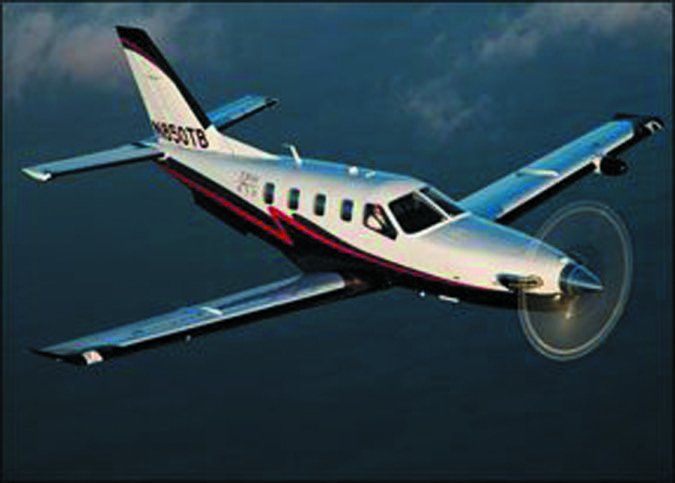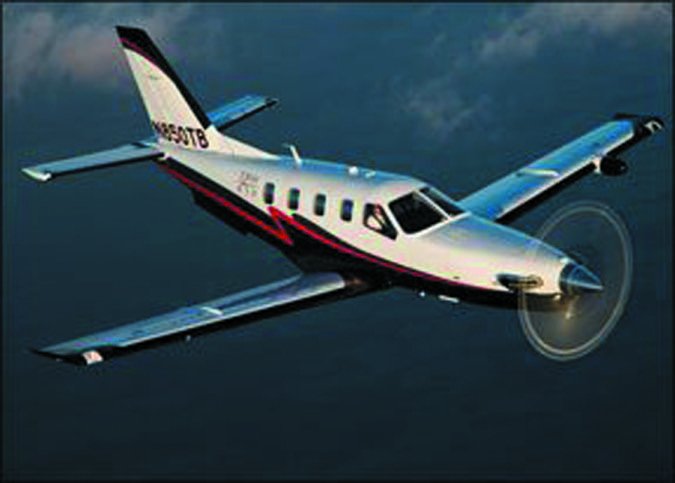
The engine is the size of a large picnic basket, easily puts out more power than the biggest horizontally opposed piston pounder, has a TBO nearly twice as long, is more reliable and weighs less—so what’s not to like about turboprop engines?
Over the last 60-plus years, the answer has proven to be that there’s a great deal to like. In fact, once turboprops expanded from their original applications on multi-engine airplanes to larger singles, their high power density and evidence of reliability has caused them to either make heavy inroads into the associated piston-engine aircraft market or dominate it.
Want examples? Certainly—the Cessna 208 Caravan series wrested control of the small-package cargo world away from the Beech 18 as owners found the operating cost was cheaper and the airplanes didn’t have to be surrounded by mechanics after every flight. The reliability history caused the FAA to allow single-engine turboprops to carry passengers in IMC under Part 135, something it had never allowed for piston power.
The owner-flown, single-engine turboprop world has exploded, seemingly as no one was looking. In this article we’re going to look at the burgeoning used aircraft market, run through a brief review of the more popular machines available and then look at some of the factors, including costs, a pilot considering stepping into the used single-engine turboprop world should keep in mind. The big one, of course, is engine condition.
As we researched this article, we were struck by the fact that the operational costs for the smaller singles, while not inconsiderable, were on the order of those for a piston twin. In addition, our experience flying some of the airplanes and talking at length with those who know them intimately also caused us to pass along a caveat repeated so often for turbine step-up pilots that it became mantra: You are going from an engine that you can hurt by improper operation in flight to one that takes care of itself in flight but that you can destroy when starting it.
A Little History
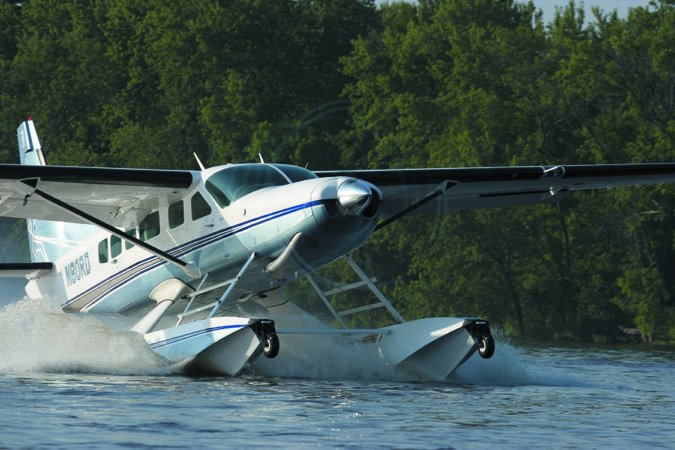
By the early 1980s, conversion shops as we’ll as Beech, Cessna and Piper were considering hanging turboprops on the front of the airframes of top-of-the-line piston singles and the first of the conversions appeared on the market, notably of the Beech Bonanza.
While the general aviation collapse of the mid-1980s slowed the development of single-engine turboprops—it didn’t stop. Cessna shelved its proof of concept turboprop P210 but discovered, to its surprise, that there was a market for owner-flown Caravans with family-friendly interiors. In 1988 Socata made the first flight of its TBM 700, a six-seat turboprop descendant of what was to be the pressurized Mooney 301 (the result of a joint venture between Socata and Mooney—the “M” in TBM stands for Mooney). The TBM 700 begat a hugely successful line of turboprop singles with near-jet speeds.
Pilatus, which had been building the “it’s even uglier than a Grumman” STOL turboprop single, PC-6 Turbo-Porter since 1961, began delivering its larger, more attractive, 280-knot PC-12 in 1994. By the year 2000, Piper had modified the Malibu and was delivering its turboprop offspring, the Meridian. We’ll go into more detail on production turboprop singles below.
Conversions
Yanking the piston engine from the nose of a high-performance single and hanging a lighter, more powerful turboprop in its place sounds relatively simple. After all, the turboprop has all of its moving parts going in the same direction, so vibration is reduced and it’s more powerful, so performance is enhanced.
Unfortunately, power is destabilizing, so there are going to be stability and control issues. In addition, the airframe may have to be modified to absorb the extra power—and maintain flutter margins.
In addition, turbine engines have higher fuel specifics than piston—and the jet fuel they consume in greater quantities weighs more than avgas—0.7 pounds per gallon more. The light weight of the turbine is offset by the need to carry more, heavier fuel to achieve reasonable range. That’s a major challenge in the relatively small airframes of piston singles designed for piston fuel consumption specifics.
Persistence paid off—there are a number of single-engine turboprop conversions on the used market. We’ll note that not all of the companies that did the conversions are still in business. We recommend extreme caution going into the purchase of an orphan machine. We’ve heard a few horror stories of airplanes grounded for extended periods because the manufacturer was out of business and specialized spare parts, including gauges, were not only hard to find but carried eye-watering prices.
We also recommend looking closely at performance and useful load numbers of the turboprop conversions. For some it’s necessary to carry full fuel to get any kind of range—and fly high—but with full fuel the useful load may be too low for your needs.
The Market
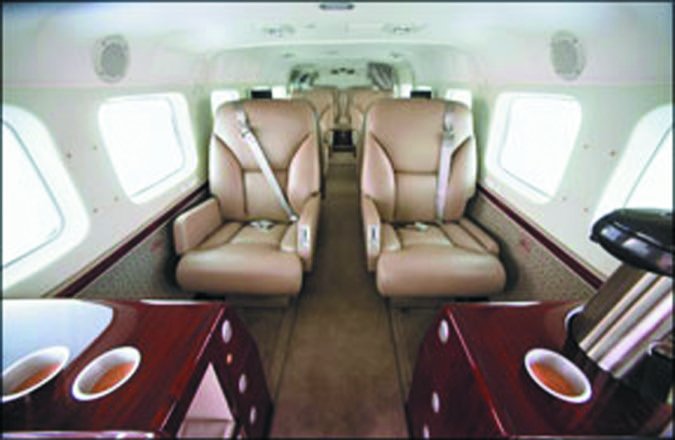
We discussed the single-engine turboprop market with Joe Casey, a Jacksonville, Texas-based aircraft broker specializing in turboprops (www.flycasey.com). He said that over the last several months he’s seen “an upward tick in an already good market.” He said he averaged two single-engine turboprop sales per month in 2017 and “2018 is starting out even better.”
Casey, and others, told us that the demand for PT6-powered, pressurized single-engine turboprops is strong. In wide-ranging discussions with brokers and sales-people with manufacturers and conversion shops, we came away of the opinion that prices are softer when it comes to the unpressurized turboprops.
We heard frustration expressed over the combination of the need to fly high to get good performance, which necessitated the use of oxygen, and the problem with getting oxygen refills.
We were told that more than half of the single-engine turboprop mods go overseas, largely because of the difficulty in finding avgas. Especially in more remote areas, the conversions of workhorse airplanes such as the Cessna 206 and 207 are popular and they are routinely operated below 10,000 feet.
The JetProp conversion of the Piper Malibu elicited praise for its performance and quality of its pressurization (well over 300 conversions have been completed and we regularly see ones listed for sale). By the same token, we heard criticism of the turboprop conversions of the Cessna P210 because of shortcomings in its pressurization system and lower maximum pressure differential. We were aware of two companies that had been carrying out that modification; neither is doing so any longer.
What’s Out There
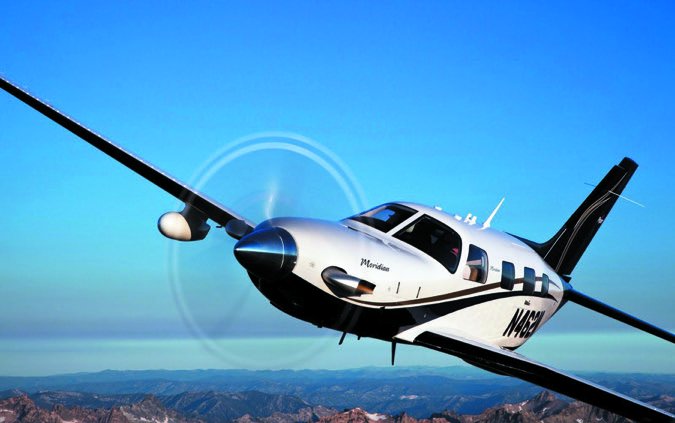
SELECT SINGLE-ENGINE TURBOPROP AIRCRAFT BLUEBOOK PRICE COMPARISONS | |||
AIRCRAFT | MODEL YEAR | AVERAGE RETAIL PRICE | ENGINE TYPE, TBO AND OVERHAUL COST |
PIPER PA-46TP MERIDIAN | 2001 2005 2015 | $625,000 $850,000 $1,800,000 | PT6A-42A, 3000 hours, $150,000 |
PILATUS PC-12 | 1995 2000 2015 | $1,600,000 $2,100,000 $4,400,000 | PT6A-67B, 3500 HOURS, $350,000 |
SOCATA TBM SERIES | 1991 TBM 700 2001 TBM 700B 2015 TBM 900 | $800,000 $1,200,000 $3,100,000 | PT6A-64 (THROUGH 2006), SUBSEQUENTLY PT6A-66D, BOTH 3000-hr tbo and $400,000 overhaul cost |
CESSNA 208B GRAND CARAVAN | 1991 2001 2015 | $675,000 $950,000 $2,200,000 | pt6a-114a, 3600 hours, $250,000 |
Before going into cost and step-up considerations, the following is a thumbnail sketch, in no particular order, of the more popular single-engine turboprops we see on the used market.
PropJet. Developed by Rocket Engineering of Spokane, Washington (www.rocketengineering.com), the PropJet DL (economy) and DLX (performance) modifications of the Piper Malibu use the 550-HP PT6A-21 (DL) and 560-HP PT6A-35 engines. Both have a TBO of 3600 hours with the hot section inspection requirement dropped if trend monitoring is used. A four-blade, reversing, full-feathering prop is standard.
The 5.3-PSI pressurization system gives a 9500-foot cabin at the FL270 maximum operating altitude. Usable fuel is 151.6 gallons. With full fuel, figure on being able to carry 350 to 400 pounds in the cabin.
Cruise for the DL at FL250 is published at 231 knots while burning just over 28 GPH. VFR range is on the order of 1000 miles. Plan on the DLX being 20 knots faster while using an additional 5 GPH, with slightly shorter range.
We consider the JetProp to be the entry-level airplane for those considering stepping up to a single-engine turboprop. Our research indicated that a used JetProp in decent condition with reasonably modern avionics can be bought for $750,000—which is also the number most often quoted to us as the starting figure for those who want to enter the pressurized single-engine turboprop world.
Rocket Engineering has also turned out some PT6A conversions of the Beechcraft Bonanza and Duke. The numbers involved are small enough that we felt them to be beyond the scope of this article.
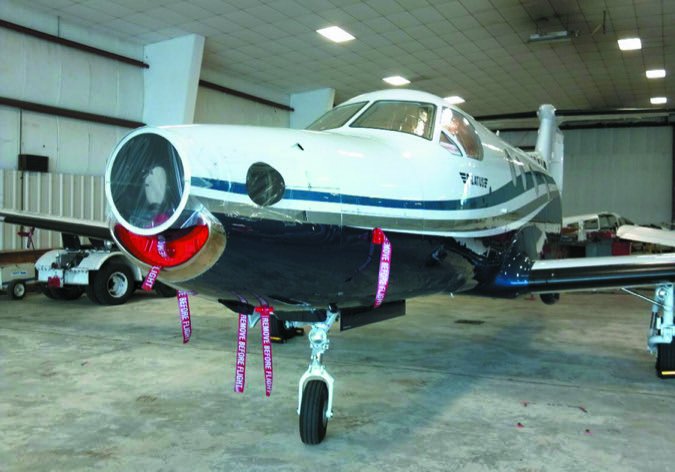
Piper Meridian. Evolving steadily since its appearance, eventually morphing into the Piper (www.piper.com) M500 and M600, the Meridian has proved to be one of the most popular single-engine turboprops. High cruise is 260 knots at FL300 with a fuel burn of 39 GPH. As with other airplanes in its class, you have to go high and stay there to get any kind of range. If everything is right, it has a 1000-mile VFR range with reserves.
Loaded with full fuel, plan on being able to put just under 500 pounds in the cabin. The 5.5-PSI pressurization system gives a 10,200-foot cabin at FL300. As with the Malibu, the cockpit is cramped and can be uncomfortable for anyone over six feet tall.
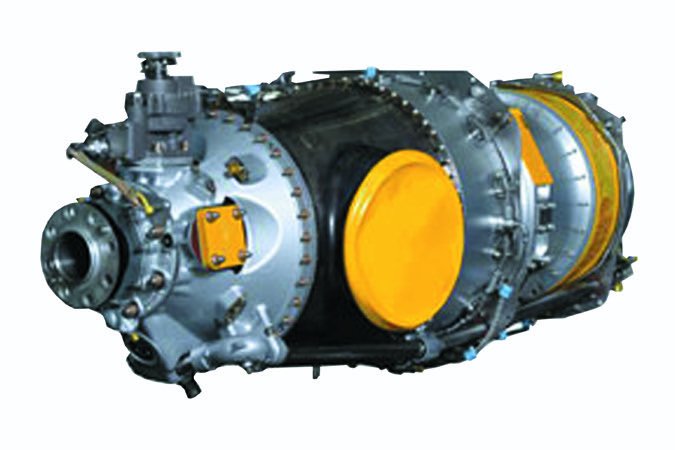
We like the fact that the Meridian does not require an inertial separator to protect the engine from damage when flying in icing conditions. The engine does not need the intake ram effect others do to make power, so Piper could use non-icing NACA ducts on the nose, thus protecting an owner-pilot from making a very expensive mistake.
Soloy Cessna 206. Having been making turbine conversions for nearly 50 years, starting with helicopters, Soloy Aviation Solutions’ (www.soloy.com) most common airplane mod has been dropping a 417-HP Rolls-Royce B17F turboprop into a Cessna 206. TBO is 3500 hours. The Mark II version of the mod has been in production since 2008. Soloy’s business development manager, Kurt Robertson, told us that the mod now sells for $765,000 (although that can vary slightly based on the price Rolls-Royce charges for the engine) and takes 8 to 12 weeks to be completed at the shop you select.
Max cruise is published at 186 knots at 25 GPH at FL180. Pulling the power back to max range produces 146 knots at 17.5 GPH. Usable fuel is 87 gallons; with all of it in the tanks, just under 900 pounds may be carried in the cabin.
We’ve seen prices all over the waterfront for used Soloy 206s, largely dependent on time on the engine and airframe and installed avionics. We think the range for a decent one is between $500,000 and $600,000.
Soloy also offers a Rolls-Royce B17F conversion for the Beechcraft A36 Bonanza. Soloy’s Robertson told us that the price for the kit, with engine, ranges between $850,000 and $900,000. We think the performance advertised for the mod by Soloy is representative of what can be expected of the PT6A mods in the field: cruise speed of 200 knots at FL200, VFR range about 1000 miles and useful load with full fuel of about 600 pounds.
There are enough turboprop mods of the Bonanza that we cannot make an educated estimate of a price range but we repeat our caution about buying one that was made by an organization that is no longer in business.
Quest Kodiak. With over 200 in service since production began in 2007, Quest Aircraft’s Kodiak (www.questaircraft.com) has proven popular throughout the world as a high-powered mini-Caravan. With a 750-HP (700 continuous) PT6A-34 up front, the Kodiak has a max cruise of 174 knots at 12,000 feet while burning 48 GPH, giving a VFR range of just over 1000 miles. Pulled back to max range power at the same altitude, cruise speed drops to 135 knots but fuel burn comes down significantly, to 33 GPH, and range jumps up over 100 miles, to 1130 NM. Engine TBO is a whopping 4000 hours.
A Kodiak will carry 320 gallons of fuel and has a useful load of just under 1400 pounds with full tanks. There are a number of interior options and the airplane can be mounted on floats without any mods.
Bluebook prices for Kodiaks range from $1.2 million for the first production year to over $2 million for recent models. Floats add another $400,000 to the value.
Cessna Grand Caravan. For the prospective owner with a Meridian budget, but the need to haul a lot of people and/or stuff, the 208B Grand Caravan from Cessna (www.txtav.com) may be the right choice. It was designed as a workhorse, so a 160-knot max cruise (with cargo pod, as most are so equipped) is the result. For that speed and a burn of 50 GPH, plan on an altitude in the low teens and, possibly, oxygen for you and your guests. If you can’t go high, plan on a fuel burn of 60 GPH. If you want to go a long way, pass out the masks as the 2240 pounds of fuel will give you 1000-NM VFR range at FL200 (max operating is FL250). Interior furnishing weight varies widely; nevertheless, you can probably take eight friends along with you when you top off the tanks.
Depending on the model year and equipment, prices for a decent Grand Caravan can be as low as $675,000 and range north of $2 million.
Socata TBM. Beginning with the model 700, Socata (www.tbm.aero) has been building personal hot rods since 1988. The most recent 850-HP TBM 930 will smoke along at 328 knots at FL260 with VFR range over 1200 NM. The TBM 850 is nearly as fast—we saw 315 knots at a fuel burn of 60 GPH during our review. Depending on the model, figure on four people in the cabin with full fuel.
The six-place cabin is truly large enough to carry the pilot plus five comfortably with reduced fuel; the seat rails are continuous through the length of the cabin, creating a wide selection of seat locations. The larger airframe allows for baggage behind the seats as we’ll as in a compartment outside the pressure vessel. Max pressure differential is 6.2 PSI, giving a 9300-foot cabin at the maximum operating altitude of FL310.
Brokers we spoke with said that the Socata got the airplane right with the C model of the 700 in 2003 and did not recommend buying an earlier version. We saw prices for the earliest 700C of $1.3 million—from there TBMs ranged up to over $3.1 million for a two-year old TBM 900.
Pilatus. Adding a million and change to the budget for the Grand Caravan shopper means stepping up to pressurization and 100 more knots for cruise on about the same fuel burn. The Pilatus (www.pilatus-aircraft.com) PC-12 with its BMW-styled interior and cargo door that is, perhaps intentionally, an inch taller and wider than that of the Grand Caravan, has a max cruise speed just a bit faster than the Meridian.
With a fuel burn of 50 GPH, best altitude is FL240. The 2704 pounds of usable fuel gives the airplane a stunning 1500-NM NBAA IFR range with a pilot plus five aboard. If one desires, it can stay aloft some eight hours at max economy power settings. Max differential for the pressurization system is 5.75 PSI, giving a 10,000-foot cabin at FL300, the maximum certificated altitude for the airplane. Prices range from $1.6 million for the earliest PC-12s to over $4.4 million for a 2015 model.
Operational Costs
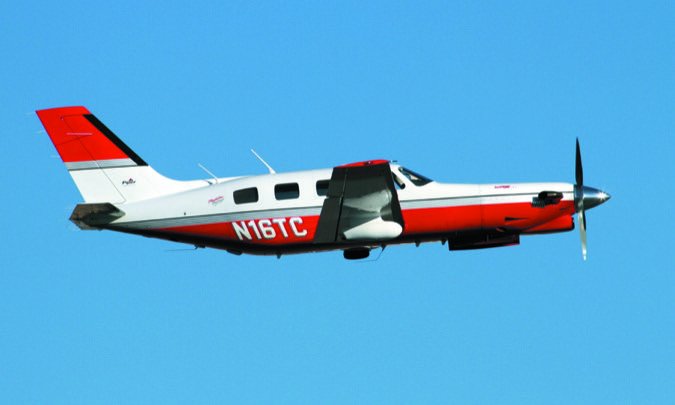
During our research for this article we were struck by the number of comments that we got from operators stating that their operational costs for the Meridian and JetProp were about the same as for a pressurized, piston twin—although those estimates ranged from $300 to $600 per hour for everything, including set-aside for engine overhaul.
The consistent comment was that the turbine engine was much more reliable than a piston engine so operating costs were predictable. “When you want to go, you can go,” was a phrase we heard more than once. We also heard owners say that turbine performance meant that they could safely plan and take trips in weather they would not wrestle in a piston twin.
Of course the elephant in the room is the price of an engine overhaul. Without detailed knowledge in of the various dash numbers and service bulletin status, a prospective buyer faces a mass of unknowns when making an initial buying decision as we’ll as where to send the engine for overhaul. While the chart on the previous page gives estimated overhaul costs, a component problem can drive the cost up radically.
We recommend that if you are considering buying a single-engine turboprop that you retain a broker who’s a specialist in the model. We do not recommend the piston-engine approach of buying an airplane with a runout engine and overhauling it. Our research into turboprop overhauls revealed that the value of an airplane with a zero-time engine and a 500-hour engine is about the same.
We also recommend retaining an expert service to manage the overhaul of your engine when the time comes. A $5000 fee is a small fraction of the cost of the overhaul.
For an in-depth analysis of overhauls of the PT6A, see the October 2015 issue of Aviation Consumer.
The Step Up

While it’s true that turbine-powered aircraft are easier to fly than piston-powered, they are more demanding to flight plan for fuel burn and weather. That, plus the value of the aircraft itself, means that to get insurance, the new pilot is going to have to go through organized training (and recurrent training) for the type of airplane involved.
Depending on the type of single-engine turboprop, we saw training available on every level from individual instructors offering courses approved by insurance companies through the flight training big dogs, Simcom and FlightSafety.
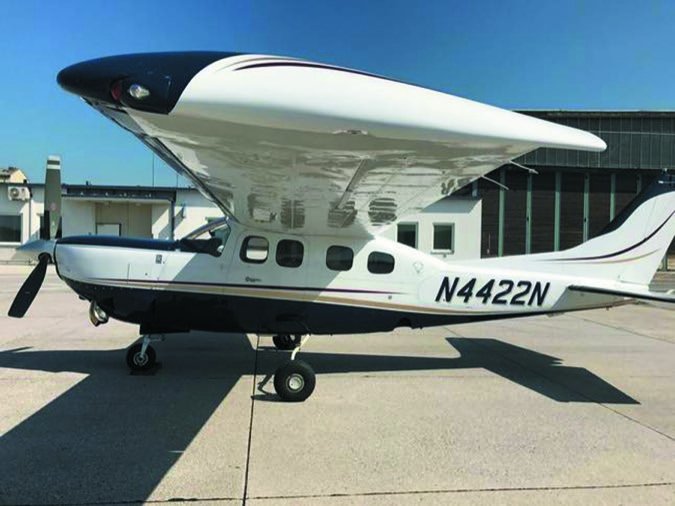
A type rating is not required for any of the single-engine turboprops. One TBM owner told us that he bought his TBM because he could afford to be away from work for four days of training per year but not for the two weeks that would be required to get a type rating and maintain it if he had bought the light jet he’d considered.
We saw training prices starting in the $4000 range for a four-day classroom and in-airplane course (including 15 hours of flight time) and going up from there. We think that a pilot with something over 1000 hours of flying time and experience in high-performance piston aircraft can complete a course in a four-day time frame if she knows the avionics. We also think that the pilot should be prepared to pay for a mentor pilot to fly with him for some time to satisfy insurance requirements.
Conclusion
We think the price of admission to the single-engine turboprop world starts at $750,000. That buys dispatch reliability and performance not available in the piston world.
No matter what, we think any purchase should be approached with care and with assistance of an expert in the type of engine involved as it’s the biggest variable in the value of the airplane. The good news is that there are more single-engine turboprops to choose from than any time in history, so finding a good one should just be a matter of a diligent search.

